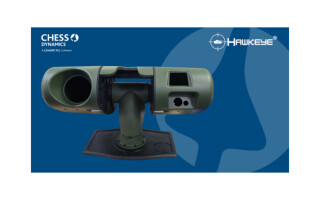X-band and S-band radars for Cobra Judy Replacement program complete live-launch tests
NewsApril 08, 2013

TEWKSBURY, MA. Raytheon engineers completed first tests of the radars for the Conra Judy Replacement (CJR) program against the launch of a live rocket. The X- and S-band radars that were integrated on the USNS Howard O. Lorenzen (T-AGM 25) acquired and tracked each stage of an Atlas V rocket that was launched from Cape Canaveral and then collected all the associated data.
The program is expected to reach Initial Operational Capability (IOC) in the beginning of 2014.The U.S. Navy will take delivery of the CJR and then transfer it to the U.S. Air Force for operational ownership. CJR will be deployed for ballistic missile monitoring and data collection as well as treaty verification. The CJR dual-band radar suite includes a common radar suite controller, X- and S-band phased-array sensors, and other related mission equipment. The CJR X- and S-band active phased-array antennas are each about four stories tall and weigh more than 500,000 pounds. The system replaces the original Cobra Judy, USNS Observation Island, that was also developed by Raytheon and had been in service since 1981.
"The performance of the radars – and the platform as a whole – has been outstanding," says U.S. Navy Capt. Rod Wester, CJR program manager, Program Executive Office – Integrated Warfare Systems (PEO IWS 2I).
Since at-sea testing began last summer, the program team has been incrementally testing the radars against increasingly complex targets. So far the radars have demonstrated full-power radiation capability and dual-band acquisition and tracking of satellites controlled by the CJR common radar suite controller.
Raytheon is the CJR mission equipment prime contractor and principal on an industry team that also includes Northrop Grumman Electronic Systems.






